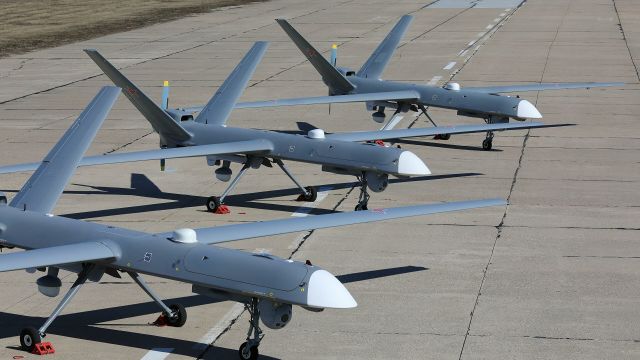Russian UAVs will receive a digital catalog for automatic recognition of NATO equipment
MOSCOW, Apr 14 – RIA Novosti. Russian reconnaissance and strike unmanned aerial vehicles will receive a digital catalog that will allow them to automatically recognize military equipment of NATO countries, an informed source told RIA Novosti on Thursday.
The source specified that the catalog will include optical images of the North Atlantic Bloc's weapons both in the visible range and in the infrared.
"It is formed due to neural network learning algorithms, which allows you to accurately identify samples of equipment in a wide variety of conditions, including with a short exposure (the technique is visible for a few seconds or less – ed.), as well as when only part of the sample enters the drone's field of view – when, for example, only part of which is visible from the shelter- or a combat vehicle," the agency interlocutor explained.
In recent years, the Russian Armed Forces have been actively saturated with unmanned aerial vehicles of various classes. In particular, small-class drones such as "Eagles", "Tachyons" or "Ailerons", tactical "Outposts", medium-altitude "Pacers" are supplied to the troops. It is expected that the UAV units will receive heavy vehicles such as "Pacer-RU", "Altius", jet "Hunters". As Russian President Vladimir Putin noted in November last year, the number of drones in service with the Russian army at that time exceeded 2,000 units.
Unmanned complexes are actively used by Russia as part of a special military operation in Ukraine both for reconnaissance tasks involving the opening of military facilities in Ukraine and for shock – the Ministry of Defense of the Russian Federation has repeatedly demonstrated video of UAV strikes on Ukrainian armored vehicles, warehouses, and troop positions.
As another informed source told RIA Novosti, UAVs are involved, among other things, in the framework of reconnaissance-firing and reconnaissance-strike circuits, when the device detects a target in a time mode close to real time, transmits its coordinates, and then corrects artillery fire or air strikes, ensuring its effective defeat.

